Today’s Current Affairs: 6th September 2025 for UPSC IAS exams, State PSC exams, SSC CGL, State SSC, RRB, Railways, Banking Exam & IBPS, etc
Table of Contents
HealthAI Global Regulatory Network:
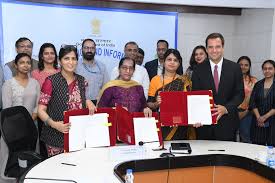
India joined Health AI Global Regulatory Network (GRN) to strengthen oversight of AI in healthcare.
- HealthAI Global Regulatory Network is a Geneva-based, independent nonprofit organization that promotes equitable access to AI-powered health innovations.
- It is a global network of health regulators dedicated to the safe and effective use of artificial intelligence (AI) in healthcare.
- It aims to build trust, improve safety and accelerate responsible innovation through shared learning, joint standards and early warnings of emerging risks.
- Members of this network group will also have access to a global directory of registered AI health tools to support transparency and collaboration.
- The Indian Council of Medical Research -National Institute for Research in Digital Health and Data Science (ICMR – NIRDHDS), and IndiaAI will work with HealthAI.
Sample Registration System (SRS) Statistical Report 2023:

The Sample Registration System (SRS) Statistical Report 2023 reveals that seniors make up 9.7 per cent of the population, up from 8.6 per cent in 2011
- Sample Registration Survey Statistical Report is carried out by the Office of the Registrar General & Census Commissioner, India (ORGI)
- It provides the fertility and mortality indicators, also includes data on crude birth rate, crude death rate and infant mortality rates.
Key Highlights of the Report:
- Total Fertility Rate: India’s Total Fertility Rate (TFR) has fallen for the first time in two years to 9 in 2023
- It pointed out that 18 States and UTs had reported a TFR of below the replacement level TFR of 2.1.
- Crude Birth Rate: India’s Crude Birth Rate (CBR) has declined 0.7-point from 19.1 in 2022 to 18.4 in 2023. (Highest CBR was in Bihar at 25.8, and the lowest was in Tamil Nadu at 12).
- Ageing population:7 per cent of India’s people are now aged 60 or above, a sharp increase in just over a decade. (Kerala leads the list, almost 15 per cent of its population is above 60 years of age)
- Sex ratio at birth: It is noted that the sex ratio at birth (SRB) in the country stood at 917, denoting that 917 girls are born for every 1,000 boys in the population.
Vulture Network Portal:

An Assam-based foundation developed the Vulture Network portal.
- Vulture Network Portal is a cloud-based portal designed to serve as a comprehensive knowledge and awareness platform on vultures of India.
- It is first of its kind in India – to build a network of individuals engaged in saving the large scavenger birds.
- It was started by We Foundation India supported by dedicated partnerssuch as the Assam Bird Monitoring Network and other organisations.
- It was developed to compile scientific information, spread awareness, and provide freely downloadable outreach materials for anyone interested in conducting awareness campaigns.
- It focuses on the threats of carcass poisoning, harmful veterinary drugs such as diclofenac, and negative social perceptions, all of which continue to drive vulture population decline.
- It is disseminating information in local languages, beginning with Assamese.
P-47 Protein:
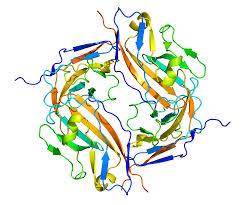
Researchers at the S. N. Bose National Centre for Basic Sciences (SNBNCBS) highlighted protein p47’s unexpected ability to act as a “mechanical chaperone.”
- P-47 Protein is a cofactor protein usually known as a helper for the cellular machine p97 (it is a powerhouse involved in moving and degrading proteins).
- It was long thought to be just an assistant known primarily for its role in protein trafficking, degradation, and membrane fusion.
- It is revealed that p47 can enhance the mechanical efficiency of protein extraction from the Endoplasmic Reticulum (ER) lumen into the cytoplasm.
- P47 stabilizes polypeptides under stress and guiding them through narrow pores, reduces the risk of misfolding and improves the success of protein translocation.
- This finding represents the first direct, single-molecule evidence that cofactors like p47 possess autonomous, force-dependent chaperone-like activity.
- It is found that p47 is not just a passive helper for p97, it can directly stabilize proteins under force, effectively acting as a “mechanical chaperone”.
- The findings suggest that targeting mechanical cofactors like p47 could lead to novel therapeutic strategies for diseases linked to protein instability.
MY Bharat Aapda Mitras:

Union Minister of Sports and Youth Affairs stated that MY Bharat Aapda Mitras will be mobilised to provide rescue operations in the flood-affected areas of Punjab and Himachal Pradesh.
- MY Bharat is an autonomous body that has been set up by the Department of Youth Affairs, Ministry of Youth Affairs and Sport
- MY Bharat’s digital platform provides equitable access to opportunities for youth to actualize their aspirations and build Viksit Bharat.
- It is meticulously designed to cater to the needs of the dynamic youth demographic, aged between 15 and 29 years.
- This platform offers a wealth of resources, mentorship programs, experiential learning opportunities, networks, and invaluable industry connections.
- MY Bharat Aapda Mitras are trained by the National Disaster Management Authority (NDMA) under the Aapda Mitra programme.
- Aapda Mitra programme is a unique initiative under MY Bharat, offering structured NDMA-certified disaster response training to young volunteers.
- It equips them with skills in search and rescue, first aid, crowd management, and emergency coordination, making them valuable assets during natural calamities.
- These youth volunteers will work at the grassroots to ensure that food, medical aid, and essential supplies reach villages cut off due to floods and landslides.
International Centre for Integrated Mountain Development:
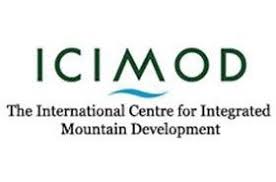
The International Centre for Integrated Mountain Development (ICIMOD) in its report said that the Hindu Kush Himalayas (HKH) region is tapping only 6.1% of its vast renewable energy potential.
- International Centre for Integrated Mountain Development is an intergovernmental knowledge and learning centre working on behalf of the people of the Hindu Kush Himalaya (HKH).
- It was formally established and inaugurated on 5 December 1983.
- Mission is to build and share knowledge that drives regional policy and action and attracts investment that enables the diverse countries and communities of the HKH to transition to greener, more inclusive, and climate resilient development.
- Member countries: Afghanistan, Bangladesh, Bhutan, China, India, Myanmar, Nepal, and Pakistan.
- Functions of International Centre for Integrated Mountain Development
- It serves the region through information and knowledge generation and sharing to find innovative solutions to critical mountain problems.
- It bridges science with policies and on-the-ground practices.
- It provides a regional platform where experts, planners, policymakers, and practitioners can exchange ideas and perspectives towards the achievement of sustainable mountain development.
- Headquarter: Kathmandu, Nepal.
Mission Mausam : Four Additional Radars To Be Installed
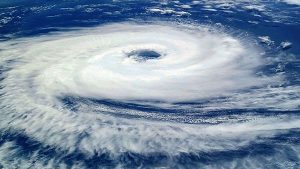
The Indian Meteorological Department (IMD) will install four additional radars under Mission Mausam in Jammu & Kashmir for more accurate, district wise specific weather forecasts.
- Mission Mausam was launched by the Ministry of Earth Sciences in 2024.
- It is implemented by the India Meteorological Department (IMD), the National Centre for Medium-Range Weather Forecasting (NCMRWF), and the Indian Institute of Tropical Meteorology (IITM).
- It aims to improve weather and climate services, ensuring timely and precise observation, modeling, and forecasting information for multiple sectors, including agriculture, disaster management, and rural development.
- Objectives of Mission Mausam:
- To enhance India’s capability in weather forecasting across various scales—short-term, medium-term, extended-range, and seasonal
- To develop high-resolution models for improved accuracy in predicting monsoon behaviour
- To strengthen observational networks with advanced radars, satellites, and automated weather stations
- To provide actionable advisories for agriculture, water resources, energy, health, and disaster management sectors
- To build capacity through research collaborations with national and international institutions
- It marks a transformative milestone in India’s efforts to address climate variability and its far-reaching socio-economic impacts.
- It supports sustainable development while safeguarding lives, livelihoods, and critical infrastructure.
Methandienone Long-Term Metabolite:

India has successfully developed a rare and high-purity Reference Material (RM) – Methandienone Long-Term Metabolite (LTM) for enhanced Anti-Doping Testing in sports.
- Methandienone Long-Term Metabolite is one of the Reference Material (RM) developed by the National Institute of Pharmaceutical Education and Research (NIPER) in collaboration with the National Dope Testing Laboratory (NDTL)
- RM is the most highly purified and scientifically characterized forms of drug substances or their metabolites, essential for accurate analytical testing.
- They are crucial for the detection of over 450 substances that are currently prohibited by the World Anti-Doping Agency (WADA).
- These metabolites help in identifying athletes who have used Methandienone
- It will increase improved detection capabilities and serve as a deterrent for athletes considering the use of anabolic steroids like Methandienone.
- The new reference material will help in enforcing transparency and integrity in sports by protecting clean athletes and acting as deterrents for use of prohibited substances.
- National Dope Testing Laboratory is a premier analytical testing & research organization established under Government of India.
- It is the only laboratory in the country responsible for human sports dope testing.
Environment Audit Rules, 2025:

The Ministry of Environment, Forest and Climate Change (MoEFCC) has notified the Environment Audit Rules, 2025 under the Environment (Protection) Act, 1986, to establish a comprehensive framework for environmental accountability across India.
Key Features of the Environment Audit Rules, 2025:
- Certification and Registration of Environmental Auditors: Environment Auditors (EAs) are to be Certified and Registered by the MoEFCC-notified Environment Audit Designated Agency (EADA). EADA is responsible for:
- Certification, registration, and oversight of auditors.
- Monitoring performance and providing training.
- Taking disciplinary action when required.
- Registered Environment Auditors (REAs): Audits will be conducted by Registered Environment Auditors (REAs).
- REAs will be assigned projects randomly to ensure impartiality.
- REAs will undertake activities including sampling, analysis, compensation calculation, and audits under various environmental and forest-related legislations.
- Two-Tiered System of Compliance:
- Tier-1: Government regulators (CPCB, SPCBs, MoEFCC regional offices) will review compliance.
- Tier-2: Audits will be conducted by REAs for third-party verification.
- Oversight and Monitoring: A Steering Committee, led by an Additional Secretary from MoEFCC, will oversee the implementation of these rules.
Dr. Sarvepalli Radhakrishnan:
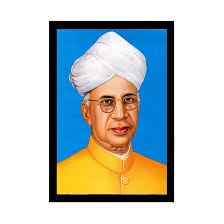
On September 5, 2025, President Droupadi Murmu paid floral tributes to Dr. Sarvepalli Radhakrishnan at Rashtrapati Bhavan on his birth anniversary, which is also celebrated as Teacher’s Day in India.
- Dr. Sarvepalli Radhakrishnan was born on September 5, 1888, in Tirutani, Andhra Pradesh. A renowned philosopher, scholar, teacher, and statesman. He Served as India’s second President (1962–1967) and first Vice President (1952–1962). He Studied at Madras Christian College.
- He was Taught at the Universities of Mysore and Calcutta; later became Spalding Professor of Eastern Religions and Ethics at Oxford University.
- Known for bridging Indian and Western philosophy, introducing Indian thought to the global stage.
- Served as Ambassador to the Soviet Union (1949–1952) before entering high political office.
- He was Strong advocate of education as a tool of transformation.
- He Chaired the University Education Commission (1949) to reform higher education in independent India.
- He Promoted religious pluralism and comparative philosophy, enhancing India’s intellectual profile abroad.
- He Guided India through critical years of Cold War diplomacy as Vice President and President.
- His birth anniversary is celebrated as Teacher’s Day, recognising his lifelong dedication to education.
Total Lunar Eclipse and ‘Blood Moon’:
A total lunar eclipse is set to occur on the night of 7th September 2025. At this time, the moon will be completely covered by the Earth’s shadow, turning copper red (Blood Moon). A Blood Moon refers to the reddish or coppery appearance of the Moon and occurs only during total lunar eclipses, which take place two to three times a year.During total lunar eclipses, the Earth blocks direct sunlight from reaching the Moon. However, sunlight passes through Earth’s atmosphere, where it is bent (refraction) and scattered. The blue wavelengths of light are scattered away, while the red and orange wavelengths pass through and fall on the Moon’s surface. This gives the Moon its distinctive deep red or reddish-orange colour. A total lunar eclipse occurs when the Moon passes entirely through Earth’s umbra (darkest part of its shadow), with the Earth, Sun, and Moon perfectly aligned, completely blocking direct sunlight.
France is facing a major political crisis as PM François Bayrou is expected to lose a confidence vote:
France is facing a major political crisis as PM François Bayrou is expected to lose a confidence vote, triggered by unpopular austerity measures.France follows a semi-presidential system under the Constitution of 1958, crafted to end instability of the Fourth Republic. It combines elements of both presidential and parliamentary systems, creating a dual executive — a directly elected President and a Prime Minister responsible to Parliament.President (Head of State): Directly elected by citizens for a 5-year term. Commands strong powers in foreign affairs, defence, dissolution of Parliament, and referendums. Prime Minister (Head of Government): Appointed by the President but must enjoy confidence of the National Assembly. Handles domestic and day-to-day governance.
Biodiversity Beyond National Jurisdiction (BBNJ) Agreement:
The Ministry of Earth Sciences has set up a 12 member panel to implement a new law to safeguard its interests in international ocean waters, aligning with the Biodiversity Beyond National Jurisdiction (BBNJ) Agreement (High Seas Treaty) agreement.The BBJN Agreement or High Seas Treaty is a legal framework under the United Nations Convention on the Law of the Sea (UNCLOS) to safeguard the ecological health of oceans.
Adopted in 2023, it aims to curb pollution, conserve biodiversity, and ensure sustainable use of marine resources in waters beyond national boundaries.It Establish Marine Protected Areas (MPAs) like national parks and wildlife sanctuaries to regulate activities and conserve ocean ecosystems.
Angikaar 2025 Campaign:
The Ministry of Housing and Urban Affairs has launched Angikaar 2025, a nationwide outreach campaign under PMAY-U 2.0 to fast-track housing delivery and enhance beneficiary awareness. Angikaar 2025 Campaign is a last-mile outreach initiative under Pradhan Mantri Awas Yojana – Urban 2.0 to bridge implementation gaps and ensure housing benefits reach intended beneficiaries. Aim is to Create widespread awareness of PMAY-U 2.0.It Facilitate verification of applications and expedite completion of sanctioned houses.
India’s first port-based Green Hydrogen Pilot Project:
Union Minister inaugurated India’s first port-based Green Hydrogen Pilot Project at V.O. Chidambaranar (VOC) Port, Tamil Nadu, making it the first port in the country to produce green hydrogen. It is a pilot facility producing green hydrogen at VOC Port, Tuticorin. Capacity: 10 Nm³ per hour, set up at a cost of ₹3.87 crore. Under Scheme Part of India’s clean energy transition and Coastal Green Shipping Corridor project (Kandla–Tuticorin). Aligned with Viksit Bharat 2047 mission and Sagarmala programme. Aim is to promote green shipping, sustainability, and self-reliance in energy, Reduce reliance on fossil fuels in port operations, Make VOC Port a hub for green bunkering and refuelling in South India.
R Gandhi Reappointed as Yes Bank Chairman by RBI:
The Reserve Bank of India (RBI) has cleared the reappointment of R Gandhi as the part-time non-executive chairman of the private sector lender. His new term will run from September 20, 2025, to May 13, 2027, as confirmed in a regulatory filing made by Yes Bank.Rama Subramaniam Gandhi is a highly respected figure in Indian banking circles. A career central banker with over 37 years of experience, Gandhi served as Deputy Governor of the Reserve Bank of India from 2014 to 2017.
Citibank Appoints Kaustubh Kulkarni as Asia-Pacific IB Co-Head:
Citibank has appointed Kaustubh Kulkarni as the new co-head of investment banking for Asia-Pacific, a region encompassing key markets like Japan, North Asia, Australia, and South Asia. Kulkarni, a seasoned finance executive with nearly three decades at JPMorgan, is set to join Citigroup in December 2025, subject to regulatory approvals. He will operate from Singapore, working alongside Jan Metzger, Citi’s current head of investment banking for Asia Pacific.
Niti Aayog Strategy to Double Pulses Production by 2047:
Niti Aayog has released a comprehensive strategy to make India self-sufficient in pulses by 2030 and double its production by 2047. The report outlines a roadmap that integrates technological, ecological, and socio-economic interventions, aiming to transform the pulses sector into a pillar of India’s food and nutritional security. Currently producing 26.06 million tonnes (MT) of pulses (as of 2022), India is projected to increase production to 34.45 MT by 2030 and further to 51.57 MT by 2047, marking a potential surplus scenario in the coming decades.
Justice Shree Chandrashekhar Sworn in as Bombay HC Chief:
Justice Shree Chandrashekhar was officially sworn in as the Chief Justice of the Bombay High Court. The oath was administered by Maharashtra Governor C.P. Radhakrishnan at a formal ceremony held at Raj Bhavan, Mumbai. This appointment marks a significant transition in the judiciary of one of India’s most prominent High Courts. Justice Chandrashekhar had previously been serving as Acting Chief Justice following the elevation of Justice Alok Aradhe to the Supreme Court of India.
Sonowal Inaugurates Green Hydrogen Project at Tuticorin Port:
On the occasion of the birth anniversary of freedom fighter V.O. Chidambaranar, Union Minister for Ports, Shipping and Waterways Sarbananda Sonowal inaugurated a landmark green hydrogen pilot project and laid the foundation for multiple infrastructure initiatives at V.O. Chidambaranar Port, Tuticorin, Tamil Nadu. This marks a major step toward India’s green maritime future and port-led economic growth. The event served both as a tribute to a revolutionary maritime figure and a showcase of India’s progress in sustainable port infrastructure.
Anutin Charnvirakul Elected Thailand’s New Prime Minister:
Anutin Charnvirakul, a seasoned political figure and leader of the Bhumjaithai Party, was elected Prime Minister of Thailand on September 5, 2025, following a landslide parliamentary vote. His victory marks a dramatic turn in Thai politics, displacing the long-dominant Pheu Thai Party backed by billionaire Thaksin Shinawatra, and ending a week of political upheaval. With 63% of the vote, Anutin emerged as a clear winner over rival Chaikasem Nitisiri, signalling a shift in Thailand’s power dynamics as the influence of the Shinawatra dynasty weakens.
Singapore Supports India’s Malacca Strait Patrol Plan:
Singapore has formally supported India’s plan to patrol the Malacca Strait, one of the world’s busiest and most critical maritime chokepoints. The announcement was made during Singaporean Prime Minister Lawrence Wong’s visit to India, where he met with Prime Minister Narendra Modi on September 4, 2025, in New Delhi. This development is part of a broader roadmap charted by the two countries to expand cooperation in defence, emerging technologies, and sustainable infrastructure.
David Lammy Appointed UK Deputy Prime Minister:
On 5 September 2025, British Foreign Secretary David Lammy was appointed Deputy Prime Minister, Justice Secretary, and Lord Chancellor, following the sudden resignation of Angela Rayner amid a tax scandal. Rayner’s exit triggered a dramatic government overhaul led by Prime Minister Sir Keir Starmer, marking a pivotal moment in UK politics




